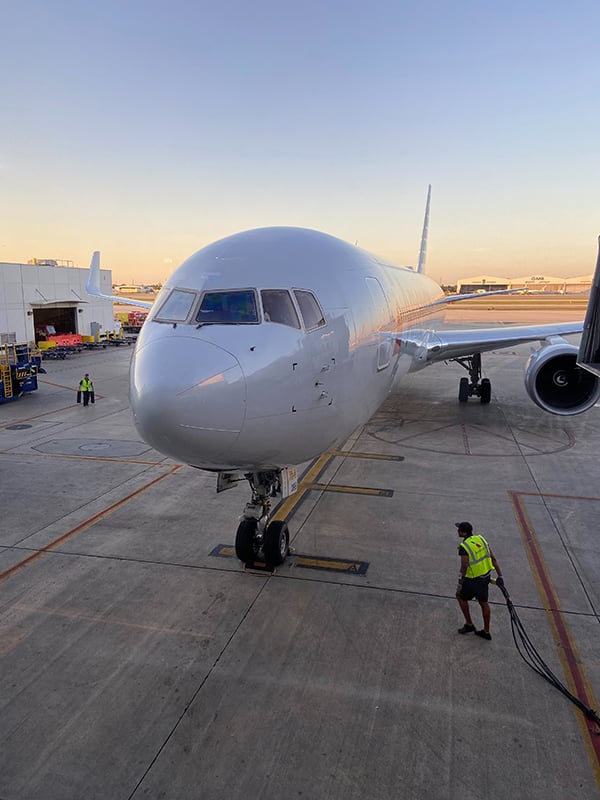What Is Confidentiality in Aviation SMS

Confidentiality in aviation SMS refers to how much personal information should be made available to your organization. By personal information, we are mainly talking about personal information in safety reports, such as people involved or the name of the reporter.
When safety issues are reported, employees may or may not have access to details about the reported issue. When employees do have access, or when you release information about a reported issue, you will need to decide if employees who are not directly involved can view information like:
- Names of people involved;
- Department names;
- Locations;
- Equipment, aircraft, or vehicles involved (that could implicate a specific person); and
- Other indicators that might identify specific persons.
Confidentiality in SMS is something that you should take a stance on and, if applicable, create a confidentiality policy that you can adhere to. Considerations for confidentiality are:
- How much personal information to include in safety reports;
- How strict to be about sterilizing information in reports before being released to the organization; and
- How transparent does your company want to be about safety information?
To structure your stance on confidentiality, you need to consider factors that affect confidentiality in SMS.
Transparency vs Confidentiality
Transparency is a term that refers to how much information is shared by managers across your organization. A company’s stance on confidentiality is based on its level of transparency. Organizations that have a:
- High degree of transparency should have a liberal stance on confidentiality; and
- Low degree of transparency should have a conservative stance on confidentiality.
Having a liberal stance on confidentiality (i.e., you don’t sanitize safety reports) but a high level of transparency, then you are likely to run into trouble because you have a conflict of interest with confidentiality and transparency. If you already have a transparency policy, this should provide valuable guidance for creating a confidentiality policy.
Related Articles on Transparency in Aviation SMS
- A Key to Transparency in Aviation SMS
- Privacy, Transparency, and Confidentiality in Aviation Safety Management
- How to Practice Safety Transparency and Just Culture in SMS Programs
Important Things to Consider About Confidentiality in Aviation SMS
When considering your company's stance on confidentiality, several factors will affect the type of confidentiality that it makes sense to have. You may even create a confidentiality policy and communicate it to employees.
Before creating your confidentiality policy/stance, you should answer the following questions:
- What is your company’s transparency posture?
- What is the size of your company?
- What type of industry does your company serve?
- How is employee information access configured?
- What is the quality of your safety culture?
Confidentiality should arise in part out of the stance your management wants to take, and in part out of what your organization needs based on the above questions.
Confidentiality in Large vs Small Organizations

Confidentiality changes depending on the size of an organization.
- In smaller organizations, it is extremely difficult to keep things confidential; and
- In larger organizations, confidential controls can be implemented to control access to information.
People talk. In smaller aviation service provider organizations where people know each other, important information is likely to get around. If something happens, almost everyone is likely to know about it. In other words, in a smaller organization, there is a different mentality about confidentiality.
In larger organizations things are different. There are different:
- Divisions;
- Locations; and
- Departments.
All of these are natural barriers to communication and information, making it easier to create confidential controls. Secondly, it is probably necessary to do so – employees in one division don’t usually need to know about safety issues in another division.
How Safety Culture Affects Confidentiality
Existing safety culture should be a large consideration when forming confidential policies around:
- Privacy;
- Retaliation; and
- Quality of teamwork.
In mature aviation safety cultures, you have flexibility with your stance on confidentiality as employees are likely to:
- Be forgiving;
- Not retaliate; and
- Work together well.
In negative safety cultures, employees may do the following if confidential information is included in safety reports available to employees:
- Retaliate against reporters;
- Complain to management;
- Sue the company, in extreme cases; and
- Opt not to report safety issues next time.
Before committing to a confidentiality policy, make sure to assess your safety culture and understand what confidential policy is realistic for your SMS.
Related Articles on Safety Culture in Aviation SMS
- Why Transparency Promotes Safety Culture in Aviation SMS
- How to Sell Aviation SMS to All Employees - Improving Safety Cultures
- 6 Types of Safety Culture in Aviation Safety Management Systems
Final Thought: Before You Create Confidential Policy
Some good things to do before creating a confidential stance are:
- Assess safety culture;
- Review existing processes and user control access; and
- Review resources used to manage your SMS that may affect confidentiality.
Last updated August 2025.






